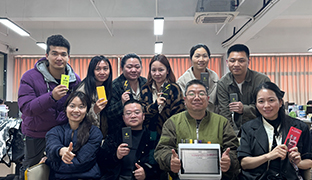In Europe’s digital transformation journey, the Netherlands stands out as a shining example. As one of the most digitally advanced nations with one of the highest smartphone penetration rates, this northwestern European country has become a strategic hub for global shared power bank enterprises.
According to recent data, the Dutch mobile charger market reached USD 637.6 million in 2023 and is expected to grow steadily at a compound annual rate of 7.3%, reaching over USD 1.045 billion by 2030.

1. Massive Market Potential: High Penetration Meets High Demand
With over 90% smartphone penetration, nearly every Dutch resident relies on mobile devices for communication, payment, travel, and entertainment. The government’s strong support for digital transformation and information infrastructure provides fertile ground for new convenience services such as shared power banks.
Meanwhile, the Netherlands’ booming tourism industry also fuels market growth. Cities like Amsterdam, Rotterdam, and The Hague attract millions of tourists annually. Their high-frequency charging needs during travel, sightseeing, and shopping make shared power banks an indispensable urban amenity.
2. Diverse Scenarios: From “Emergency Backup” to “Daily Necessity”
In the Netherlands, shared power banks are no longer limited to malls or restaurants. They are now widely available in transport hubs (e.g., Amsterdam Central Station), universities, office lobbies, and outdoor festivals—everywhere you go.
This high-frequency, deeply integrated usage has transformed shared chargers from a temporary fix into essential urban infrastructure. With the continuous pursuit of convenience by locals and tourists alike, the industry is entering a stable, long-term growth phase.

3. Innovation and Policy Drive: A Fertile Ground in Europe
The Netherlands is renowned for its open economy and innovative tech ecosystem. Recent EU initiatives—such as the Renewable Energy Directive III (RED III) and the Alternative Fuels Infrastructure Regulation (AFIR)—are advancing sustainable energy technologies and charging systems, providing a solid policy framework for shared power bank development.
Under these favorable conditions, innovative shared charging brands have the opportunity to capture market share rapidly with high-quality products and flexible business models, expanding from local deployment to Europe-wide growth.
4. Litashared Solutions: Empowering Europe with Chinese Intelligence
As a leading integrated shared power bank solution provider from China, Litashared, under ZDE Core, has built a strong presence in the European market—offering end-to-end support covering both hardware and software:
-
Hardware Manufacturing: Produced by source factories with CE, FCC, and RoHS certifications, fully compliant with European safety and quality standards.
-
Software System: Supports Dutch, German, and other language customizations, with independent deployment and source code delivery ensuring brand autonomy and data security.
-
Localized Payment Integration: Fully compatible with major European payment methods such as iDEAL, SEPA, and PayPal, enabling quick adaptation to the Dutch market.

As digital lifestyles continue to evolve, mobile charging is becoming a core urban necessity in Europe. With its strong economy, open policies, and growing consumer power, the Netherlands is emerging as the ideal launchpad for shared power bank expansion across Europe.




 Company and Product Information Download
Company and Product Information Download
.jpg)

.jpg)

.jpg)
.jpg)
.jpg)





